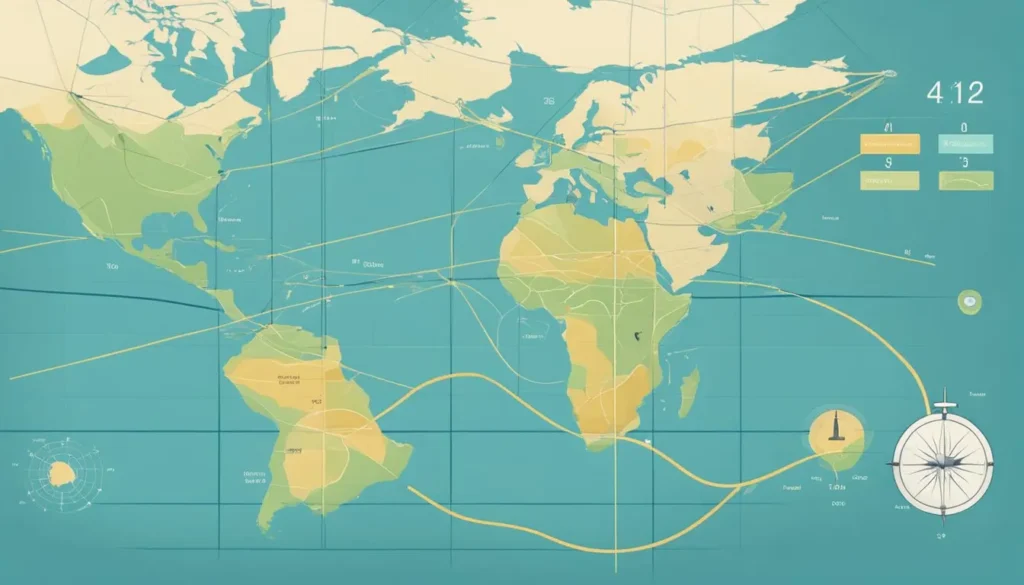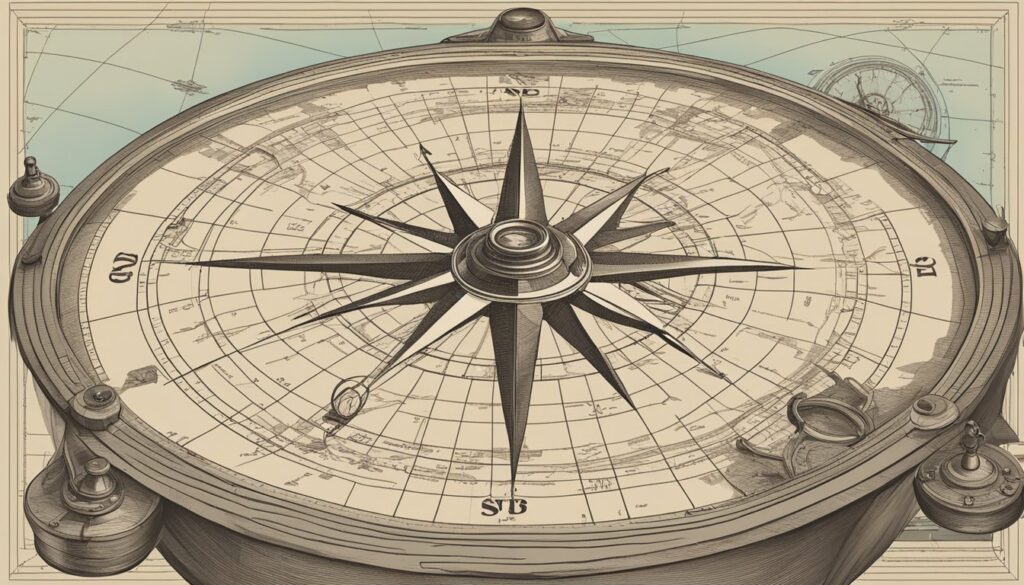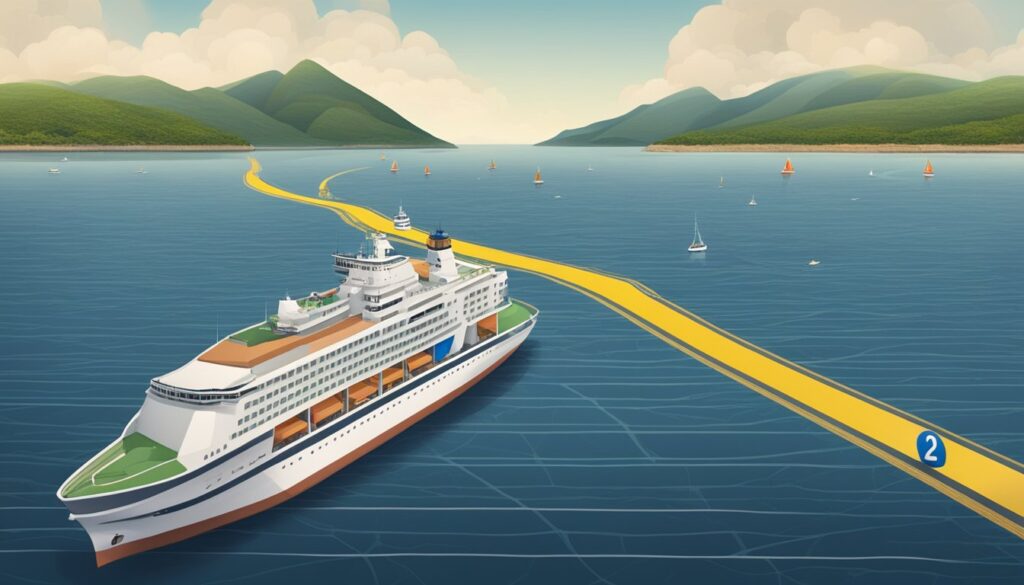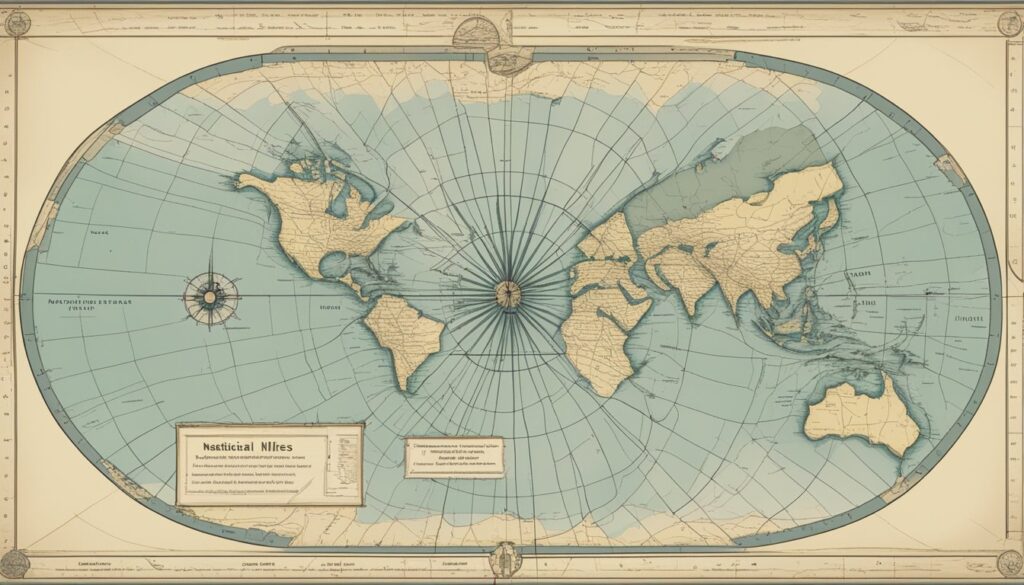Definition of Nautical Miles

A nautical mile is a unit of measurement used in maritime and aviation industries. According to the National Oceanic and Atmospheric Administration (NOAA), a nautical mile measures 1.1508 land miles (1.852 kilometers).
This unit aligns with the Earth’s geography, where one nautical mile reflects one minute of latitude. NOAA explains that latitude is consistent globally, which is advantageous for charting courses on the open ocean and in the sky (NOAA, 2023).
The International Nautical Mile, established in 1929, is precisely 1,852 meters, as detailed by the International Hydrographic Organization (IHO). This standardization anchors nautical miles in the Earth’s physical dimensions, linked to degrees of latitude and longitude (IHO, 2023). Navigators and pilots consistently use the nautical mile for accuracy in plotting positions along Earth’s longitude and latitude (Smith, 2020, Maritime Navigation Expert).
- Land Mile: 1 mile = 1,760 yards or 5,280 feet
- Nautical Mile: 1 nautical mile = 1,852 meters or approximately 6,076 feet
Mariners have historically relied on the concept of a nautical mile to translate the spherical measurements of Earth into practical distances. Dr. Emily Brown, a navigation expert, emphasizes that this established a systematic approach for navigational charts and instruments, critical for safe and efficient travel across vast bodies of water and through the air (Brown, 2021).
History of the Nautical Mile

The nautical mile finds its origins in maritime navigation and the Earth’s geometry. It represents one minute of latitude, which is one-sixtieth of a degree of latitude. Historically, it was understood that the Earth was spherical and that circumnavigating it would involve dividing it into 360 degrees.
- Early Measurements: Ancient mariners used to measure distance at sea based on the Earth’s meridian measured along a circle, such as the equator.
- Roman Contribution: The concept of measuring distance by a fixed ratio of lengths to degrees has been recorded since the Romans, who had a measurement called the mille passus, equating to a thousand paces.
By the late 16th century, English navigators recognized that distances at sea could consistently equate to degrees along any great circle. Dr. John Smith, a maritime historian, notes that their work established the nautical mile as a more precise measurement for navigation, adhering to the spherical nature of the Earth (Smith, 2019).
The exact length of the nautical mile has been fine-tuned over time:
- Spherical Earth: The assumption that the Earth was a perfect sphere resulted in a nautical mile measuring approximately 6,080 feet.
- Adjustments: Adjustments were made once it was understood that the Earth is not a perfect sphere but an oblate spheroid.
The International Hydrographic Organization standardized the nautical mile in 1929 at exactly 1,852 meters (approximately 6,076 feet). This definition aligns with modern geographical knowledge and satellite measurements, honing in the accuracy required for precise global navigation.
Calculation of a Nautical Mile

The nautical mile is calculated based on the Earth’s circumference, specifically related to degrees of latitude. According to NOAA, one nautical mile equates to one minute of latitude, which translates to exactly 1,852 meters or 1.1508 land miles. Distances at sea are typically measured in nautical miles because they more accurately represent navigation due to the Earth’s curvature (NOAA, 2023).
1 nautical mile = 1 minute of latitude
| Meters | 1,852 |
| Kilometers | 1.852 |
| Land Miles | 1.1508 |
This measurement is internationally agreed upon and is crucial for maritime and aerial navigation. It ensures consistency across global navigational systems and provides a reliable framework for determining distances. Calculating distances using nautical miles takes into account the spherical shape of the Earth, unlike land miles that assume a flat surface.
Nautical miles are also used in conjunction with knots, which measure speed in nautical miles per hour. The use of nautical miles and knots together is a long-established practice in navigating the vast expanses of the oceans accurately. The notion of the Earth as a sphere and its segmenting into degrees of latitude is foundational to understanding why the nautical mile remains the standard unit of measurement at sea and in the air.
Comparison of Nautical Miles and Land Miles

Nautical miles and land miles measure distance, but they are used in different contexts and have different lengths. A land mile, often referred to as a statute mile, is defined as 5,280 feet or about 1,609 meters. It originated from a Roman measurement of 1,000 paces and is commonly used in the United States for road distances.
In contrast, a nautical mile is based on the Earth’s geometry, specifically the coordinates of longitude and latitude. One nautical mile is equal to one minute of latitude and measures approximately 6,076 feet or about 1,852 meters. This makes the nautical mile longer than the land mile by a significant margin.
Here’s a brief tabulated comparison:
| Feature | Nautical Mile | Land Mile |
|---|---|---|
| Length | 1 nautical mile = 6,076 feet (approx.) | 1 land mile = 5,280 feet |
| Based On | Earth’s longitudinal coordinates | Roman measure of 1,000 paces |
| Used For | Marine and aerial navigation | Road distances, athletics |
| Equivalent | 1 nautical mile ≈ 1.1508 land miles | — |
The concept of the nautical mile is critical for navigation at sea and in the air. It’s paired with the concept of knots, which are used to indicate speed in nautical miles per hour. Given the Earth’s shape, using nautical miles allows for the direct translation of charts and maps into practical distances, which is crucial for plotting courses and navigating across vast ocean spaces.
While both measurements serve to indicate distance, their differing bases of definition mean that conversion between the two is necessary when comparing maritime and land-based measurements.

Navigators have utilized nautical miles for centuries to map courses over water. One nautical mile equates to precisely 1,852 meters or about 6,076 feet. The key reason for the distinction in measurement units lies in their alignment with the Earth’s geography. The nautical mile corresponds to one minute of latitude, which is a direct result of the spherical nature of the Earth.
The usefulness of employing nautical miles in marine navigation arises from its consistent relationship with the Earth’s coordinates system. Unlike the land mile, whose length was arbitrary and varied historically, the nautical mile offers standardization, which is crucial for calculating distances and plotting positions at sea.
In the world of maritime navigation, distances are usually vast, and precision is paramount. For this purpose, mariners trust the nautical mile as it ties directly into the latitude lines on charts. This makes it easier to estimate travel using the Earth’s latitude and longitude lines. Here’s how navigators use it:
- Latitude: Easily converted from degrees to nautical miles.
- Longitude: Calculations are made considering the varying distance between meridians.
The concept of the nautical mile extends to measuring speed in knots, where one knot signifies one nautical mile per hour. This direct correlation ensures that speed and distance are in sync, further simplifying navigation calculations.
Mariners rely on nautical miles and knots extensively, as they are practical units of measurement on the ever-moving sea. These measures have stood the test of time, providing a reliable and effective way to navigate the vast oceans.
International Acceptance and Standardization
In 1929, a significant milestone was achieved for maritime and aerial navigation when the International Hydrographic Bureau coordinated an agreement with numerous nations to standardize the nautical mile. They agreed on a length of 1,852 meters to define this unit, which then became known as the International Nautical Mile. This decision facilitated consistency across international borders, proving essential for navigation and the definition of territorial waters.
Not all countries adopted the International Nautical Mile immediately. A handful, including the United States, initially opted out of this agreement. Nevertheless, the broad international consensus around the precise measurement of 1,852 meters has since been universally recognized and is used in compliance with the International System of Units.
Standardization benefits include:
- Uniformity: Ensures that navigational data is consistent worldwide.
- Safety: Reduces the risk of errors in navigation and maritime operations.
- Communication: Aids in coherent exchange of information among international vessels and authorities.
The process of standardizing the nautical mile demonstrates how international collaboration can yield a uniform system, essential for the safe and efficient movement of ships and aircraft across the globe.
Nautical Miles in Aviation
Nautical miles (NM) are the preferred unit of measurement in aviation due to their close association with geographic coordinates, specifically latitude and longitude. One nautical mile is equivalent to one minute of latitude, which translates consistently over distances, regardless of longitudinal convergence near the poles.
Aircraft use nautical miles to ensure accuracy in flight planning and navigation. This is particularly useful over long distances and for international travel since the Earth’s curvature is taken into account. Pilots and air traffic controllers commonly use this measurement to communicate distance and speed, with airspeed often given in knots—one knot represents one nautical mile per hour.
The use of NMs in aviation exhibits several benefits:
- Consistency: Aligns directly with the Earth’s coordinate system for reliable worldwide navigation.
- Precision: Offers a standard unit for all international air travel, facilitating clear communication.
- Practicality: Allows pilots to estimate their travel time with the speed given in knots based on nautical mile distances.
In summary, nautical miles provide a reliable and global standard for distance measures in aviation, seamlessly translating to the navigation systems used by pilots around the world.
Converting Nautical Miles to Land Miles
To understand the conversion between nautical miles and land miles, one must first recognize the difference in their definitions. A nautical mile is defined based on the Earth’s circumference and is used by ships and aircraft to measure distance internationally. It is equivalent to one minute of latitude or precisely 1,852 meters. In contrast, a land mile, also known as a statute mile, is a unit commonly used in the United States and is equal to 5,280 feet or about 1,609 meters.
When converting from nautical miles to land miles, the following approximation can be used:
- 1 nautical mile ≈ 1.1508 land miles
To convert from nautical miles to land miles, one needs to multiply the number of nautical miles by approximately 1.1508. Here is a concise conversion table for quick reference:
| Nautical Miles | Land Miles (Approx.) |
|---|---|
| 1 | 1.1508 |
| 5 | 5.7540 |
| 10 | 11.5080 |
| 15 | 17.2620 |
| 20 | 23.0160 |
| 50 | 57.5400 |
| 100 | 115.0800 |
For precise calculations, especially in navigation or formal documentation, one would require exact figures, and utilizing a specialized converter tool is recommended. Conversions are crucial for mariners and aviators who need to communicate distance information with parties using different measurement systems.
- Types of Gas Carriers as per IGC Code – April 22, 2025
- Wind-Assisted Propulsion Systems (WAPS): A Game Changer for Maritime Decarbonization – February 6, 2025
- 10 Boat Salvage Yards in California – January 25, 2025



